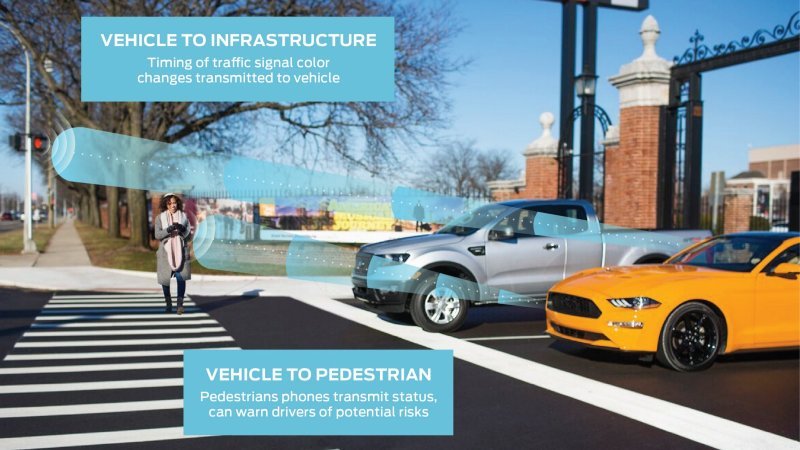Ford plans new wireless technology for connected cars in 2022

Ford said on Monday it plans to roll out a wireless technology for its new vehicle models in the United States, starting in 2022, that will allow direct communication between connected devices.
The new technology, called C-V2X, or cellular vehicle-to-everything, would augment sensors used in self-driving cars making the vehicle's view from radars and cameras more comprehensive.
"C-V2X could complement these systems in ways similar to how our sense of hearing complements our vision," said Don Butler, executive director for Ford's connected vehicle platform.
Here's a more elaborate explanation from Butler:
C-V2X is a wireless communication technology that can "talk" to and "listen" for similarly equipped vehicles, people and traffic management infrastructure such as traffic lights to relay important information and help make city mobility safer and less congested. Planned alongside the rapidly building 5G cellular network, C-V2X enables direct communication between the connected devices, meaning a signal doesn't need to first travel to a cellular tower, allowing vehicles to quickly send and receive information. Ultimately, it lets drivers know what's ahead of them even before they have to encounter it.
Navigating four-way stops becomes much easier with C-V2X, for example, since vehicles will be able to communicate with each other to negotiate which one has the right of way. In the same way, a car that's involved in an accident can relay its status to approaching vehicles, giving them advance notice of a potentially dangerous situation. Even a pedestrian equipped with a mobile phone could convey their location to other vehicles, ensuring that everyone on the road is aware of people who may be out of their direct line of sight.
Communicating with infrastructure such as stoplights and road signs, meanwhile, means cities have even easier ways of making sure drivers get the information they need to move more freely and safely. With C-V2X, a traffic light can send signals alerting drivers about when it will turn green or red, or whether a driver is at risk of running a red light.
Road signs could provide advance warning of recent accidents or provide more context regarding road construction, giving drivers the opportunity to reroute or more safely move through work zones. Further out, cities could even use this technology to enable smart vehicles to "talk" to smart traffic management systems to create better flowing transportation systems.
Ford has said it expects to launch self-driving vehicles for sale by 2021, when a new vehicle architecture designed specifically for autonomous systems is expected to be ready. Before that, it plans to equip every new U.S. model with cellular connectivity by the end of 2019. C-V2X will work with Ford Co-Pilot360 driver-assist and safety technologies.
Related News
